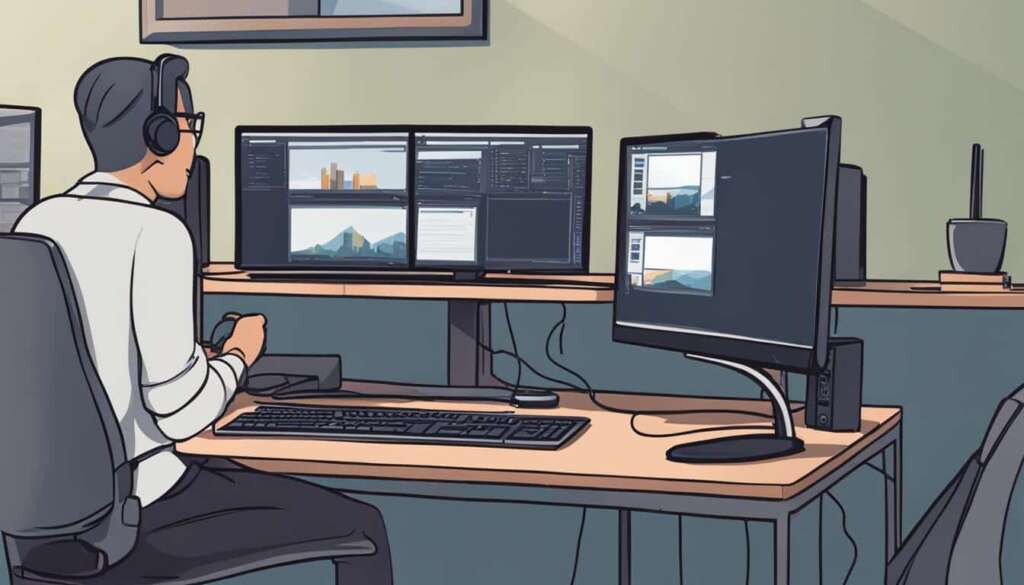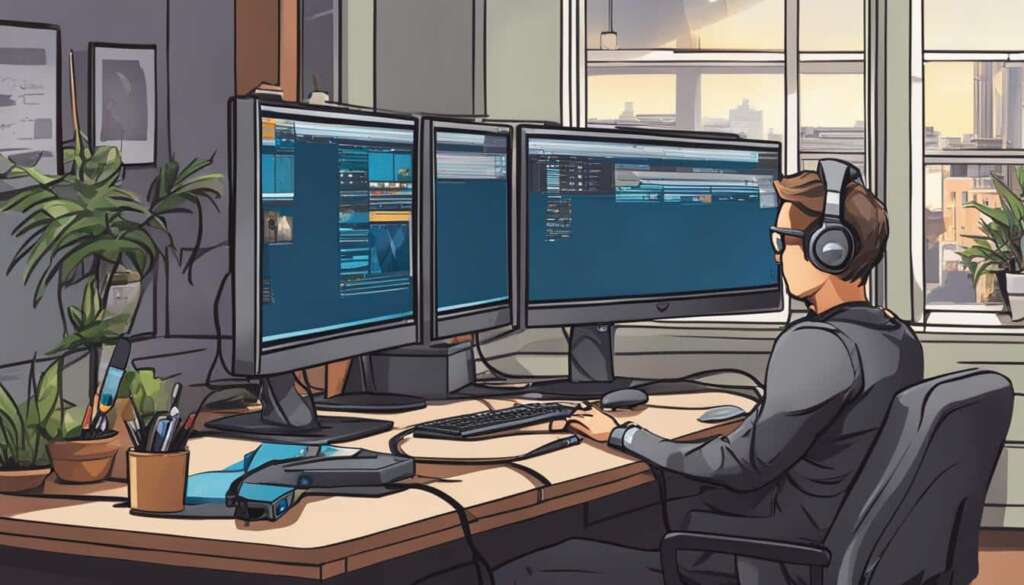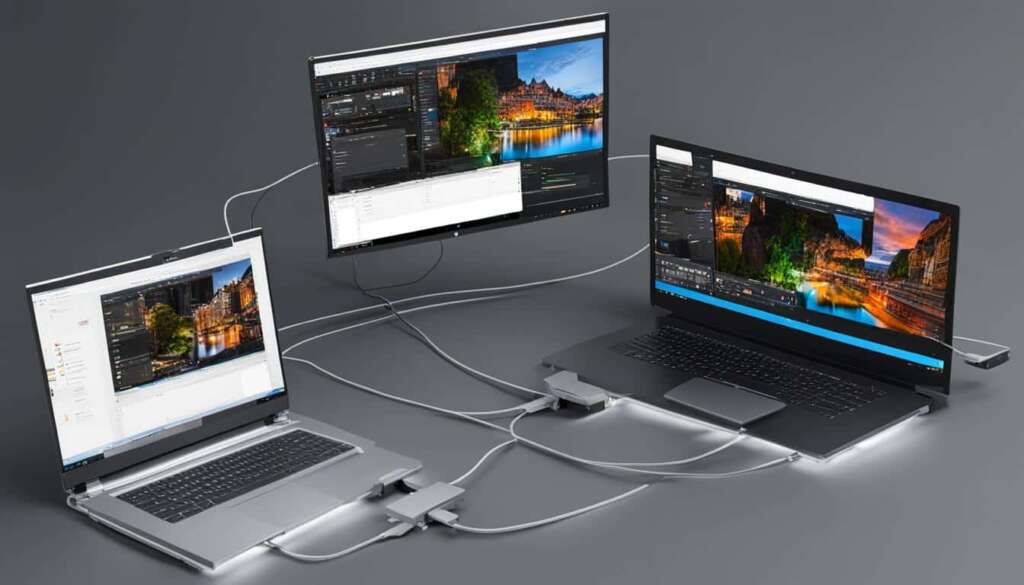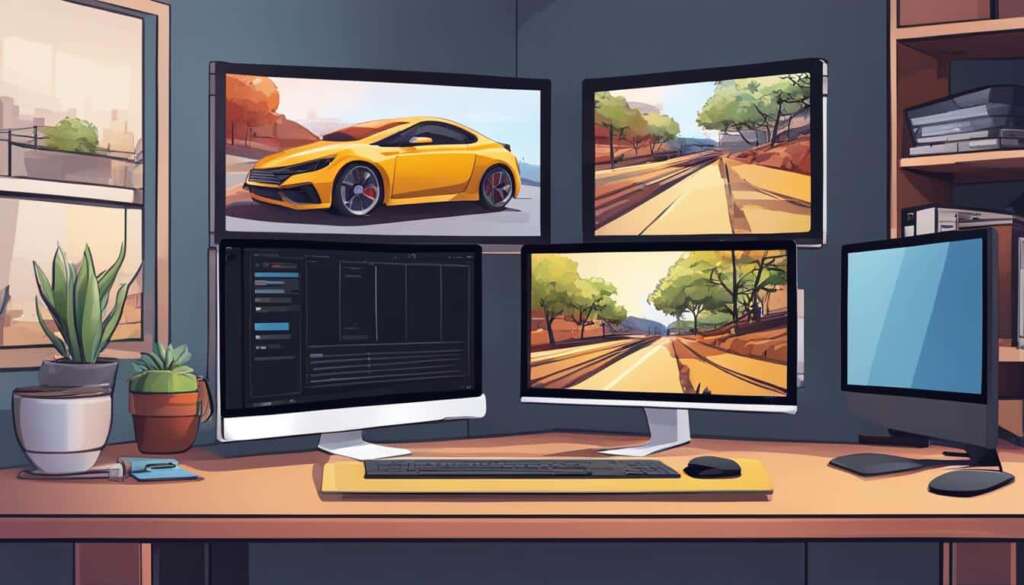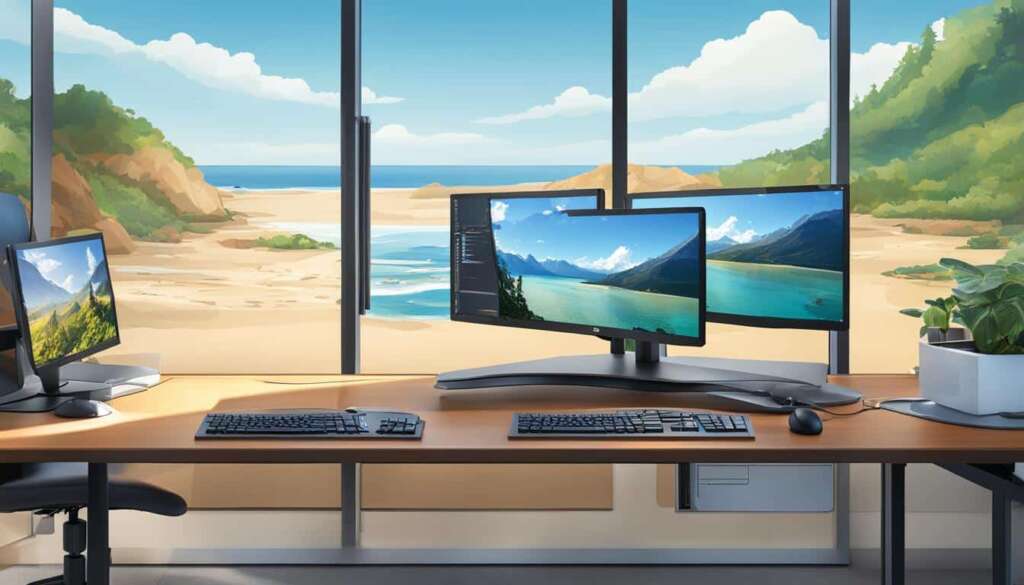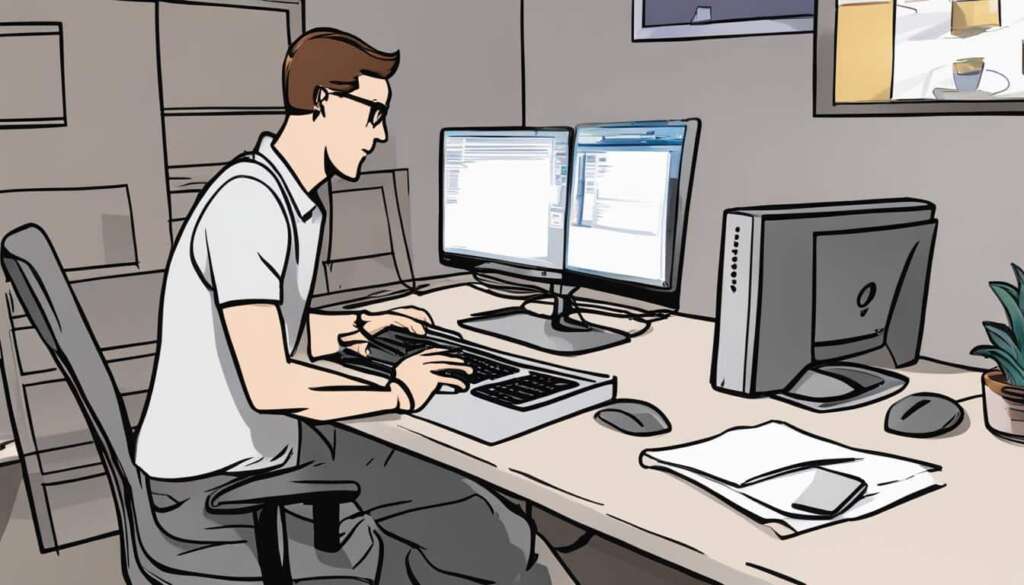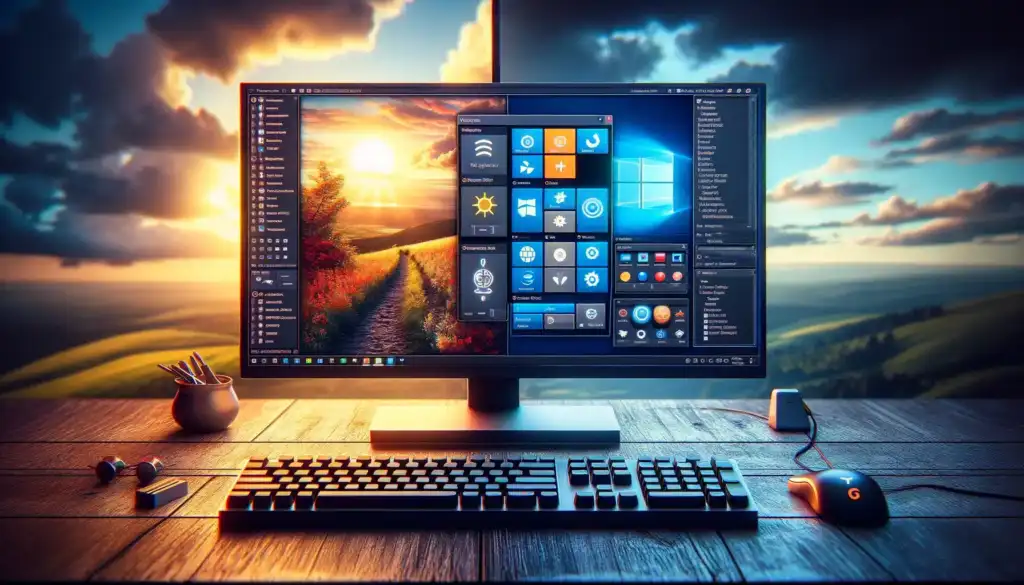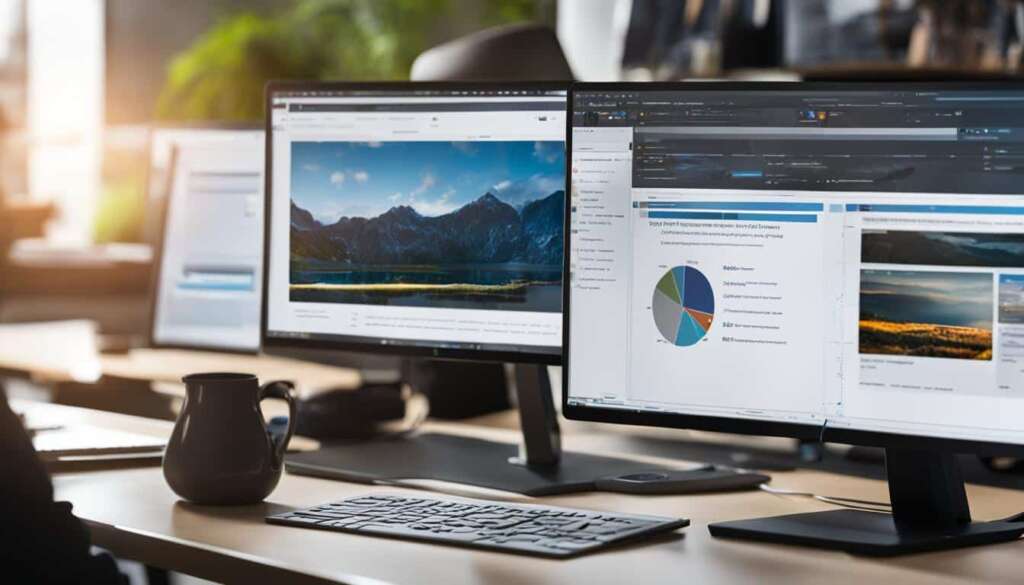Table of Contents
Setting up dual monitors on a PC can greatly enhance productivity, allowing for multitasking and improved workflow. Windows makes it easy to add additional monitors to your setup. To begin, ensure that your PC has the appropriate connections for dual monitors, such as two HDMI outputs or one HDMI and one DisplayPort output.
If you have a dedicated graphics processing unit (GPU), use its outputs for connecting displays rather than the motherboard’s. Physically connect the monitors to your PC using HDMI cables or a combination of HDMI and DisplayPort cables.
Windows will automatically detect the displays, with the first one connected becoming the main display. You can then rearrange the displays, adjust individual settings, and choose the desired multiple display setting to extend your desktop or duplicate the display.
With the setup complete, you can enjoy the extra screen space for improved productivity and organization.
How to Check If Your Computer Supports Dual Monitors
Before setting up dual monitors, it’s important to check if your computer supports this configuration. Most modern computers’ motherboards have the capability to support multiple monitors. To determine if your motherboard supports dual monitors, find its name and look up its features online. Check for terms like “Multi-Display,” “Multi-Monitor,” or “Dual Display.”
Additionally, identify your computer’s video connection type, which can be HDMI, DisplayPort, USB-C/Thunderbolt, VGA, or DVI. Different computers may have different video output ports, so make sure your monitor has a corresponding input port or purchase an adapter if necessary.
It’s also worth noting that some laptops may have limitations in terms of available ports for connecting additional monitors.
| Computer Model | Motherboard Features | Supported Video Connection Types |
|---|---|---|
| HP Pavilion 15 | Dual Display support | HDMI, USB-C |
| Dell Inspiron 13 | Multi-Monitor support | HDMI, DisplayPort, USB-C |
| Lenovo ThinkPad T490s | Integrated Graphics with Dual Display support | USB-C/Thunderbolt, HDMI |
By checking your motherboard’s capabilities and understanding the different video connection types, you can ensure that your computer is compatible with dual monitors.
Configuring Multiple Displays on Windows and Mac
Once you have physically connected your monitors to your PC, it’s essential to configure them correctly. Whether you are using Windows or Mac, the process is relatively straightforward, allowing you to make the most of your dual monitor setup.
On Windows, begin by opening the display settings. To do this, navigate to Start > Settings > System > Display. Once in the “Rearrange your displays” window, you can easily drag and arrange the monitors to your desired positions. Windows also provides the flexibility to adjust individual settings for each monitor, cater to your preferences, and optimize your workflow. Select the multiple display setting that suits your needs, such as extending the displays, duplicating the display, or showing content on one monitor only.
If you’re a Mac user, the process is no different. Start by clicking on the Apple logo in the top-left corner and selecting System Preferences. From there, choose the Display option and navigate to the Arrangement tab. Here, you can extend your desktop to the second monitor or choose to mirror the primary monitor. It is crucial to ensure that you adjust the positioning of the monitors according to their physical arrangement for a seamless viewing experience.
Configuring multiple displays on either Windows or Mac allows you to create a productive and efficient workspace. Take advantage of the extensive customization options available to enhance your workflow, improve multitasking capabilities, and maximize your productivity.
FAQ
What are the benefits of setting up dual monitors on a PC?
Setting up dual monitors on a PC can greatly enhance productivity, allowing for multitasking and improved workflow.
What connections do I need on my PC for dual monitors?
Ensure that your PC has the appropriate connections for dual monitors, such as two HDMI outputs or one HDMI and one DisplayPort output.
Should I use the graphics processing unit (GPU) or the motherboard’s outputs for connecting displays?
If you have a dedicated GPU, it is recommended to use its outputs for connecting displays rather than the motherboard’s.
How do I physically connect the monitors to my PC?
Physically connect the monitors to your PC using HDMI cables or a combination of HDMI and DisplayPort cables.
How does Windows detect the displays?
Windows will automatically detect the displays, with the first one connected becoming the main display.
Can I rearrange the displays and adjust individual settings?
Yes, you can rearrange the displays, adjust individual settings, and choose the desired multiple display setting to extend your desktop or duplicate the display.
How can I check if my computer supports dual monitors?
To determine if your computer supports dual monitors, find its name and look up its features online. Check for terms like “Multi-Display,” “Multi-Monitor,” or “Dual Display.”
What video connection type should I identify on my computer?
Identify your computer’s video connection type, which can be HDMI, DisplayPort, USB-C/Thunderbolt, VGA, or DVI.
What should I do if my laptop has limitations in terms of available ports for connecting additional monitors?
If your laptop has limitations in terms of available ports for connecting additional monitors, you can either use adapters or consider purchasing a docking station that supports multiple displays.
How do I configure multiple displays on Windows?
On Windows, open the display settings by going to Start > Settings > System > Display. In the “Rearrange your displays” window, you can drag and arrange the monitors to your desired positions.
How do I configure multiple displays on Mac?
On Mac, open the system preferences by clicking the Apple logo in the top-left corner and selecting System Preferences. Go to Display and click on the Arrangement tab. Here, you can extend your desktop to the second monitor or choose to mirror the primary monitor.
How should I adjust the positioning of the monitors on Windows and Mac?
Make sure to adjust the positioning of the monitors according to their physical arrangement for a seamless experience.

